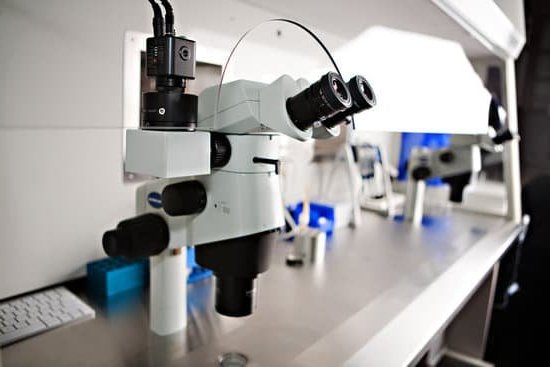Can pre-seminal fluid lead to pregnancy? Understanding the role of pre-seminal fluid in reproduction is an important aspect of sexual health education. This article aims to dispel myths and provide accurate information on the topic.
Pre-seminal fluid, also known as pre-ejaculate, is a bodily fluid that is released from the male reproductive system during sexual arousal. It is often a topic of concern when it comes to pregnancy risk and contraception. Understanding what pre-seminal fluid is and how it functions is essential in addressing misconceptions surrounding its potential to lead to pregnancy.
In this section, we will explore the composition of pre-seminal fluid, address common misconceptions about its role in pregnancy, and discuss the factors that can affect the likelihood of conception from pre-seminal fluid. By understanding the science behind pre-seminal fluid, individuals can make informed decisions about their sexual health and contraception options.
What Is Pre-Seminal Fluid Made Of?
Pre-seminal fluid, also known as pre-ejaculate or pre-cum, is a clear, colorless fluid that is released from the male urethra during sexual arousal. This fluid plays a crucial role in lubricating the urethra and neutralizing any acidity present, creating a more favorable environment for sperm to survive. While it is not produced by the same glands as semen, pre-seminal fluid can contain some sperm if residual sperm is present in the urethra from a previous ejaculation.
What exactly is pre-seminal fluid made of? The composition of pre-ejaculate can vary from person to person, but it generally contains water, mucin, electrolytes, enzymes, and other chemicals. It is important to note that the presence of sperm in pre-seminal fluid is not guaranteed, and its composition does not necessarily dictate its ability to lead to pregnancy. However, it can act as a carrier for any residual sperm present in the urethra.
Despite its potential role in pregnancy, many myths and misconceptions surround pre-seminal fluid and its ability to lead to conception. It’s essential to separate fact from fiction when it comes to this topic to better understand the risks and take appropriate precautions.
Myth vs Fact
Pre-seminal fluid, also known as pre-ejaculate or Cowper’s fluid, is a clear, colorless bodily fluid that is released from the male urethra during sexual arousal. This fluid serves as a natural lubricant and is produced by the Cowper’s glands. It is important to note that pre-seminal fluid is not the same as semen, which is released during ejaculation.
What is Pre-Seminal Fluid Made of?
Pre-seminal fluid contains a variety of components including urea, creatinine, and acid phosphatase. It also contains sperm in some cases, if there are any remaining in the urethra from a previous ejaculation. However, the concentration of sperm in pre-seminal fluid is typically much lower than in ejaculate.
The Role of Pre-Seminal Fluid in Pregnancy
There has been ongoing debate regarding whether pre-seminal fluid can lead to pregnancy. Some research suggests that while pre-seminal fluid itself does not typically contain enough sperm to cause pregnancy, it can pick up leftover sperm from a previous ejaculation within the urethra and carry them into the vagina during sexual activity. This could potentially lead to pregnancy if there are viable sperm present in the pre-seminal fluid.
| Component | Content |
|---|---|
| Urea | Present |
| Creatinine | Present |
| Sperm (in some cases) | Low concentration |
The Role of Pre-Seminal Fluid in Pregnancy
Pre-seminal fluid, also known as pre-ejaculate or pre-cum, is a clear, lubricating fluid that is released from the penis during sexual arousal. Contrary to popular belief, pre-seminal fluid is not the same as semen and it serves a different purpose in the reproductive process.
While its main function is to lubricate the urethra and neutralize any residual acidity from urine in order to protect sperm, it does not contain sperm itself. However, there is a debate about whether pre-seminal fluid can carry residual sperm from a previous ejaculation.
What is Pre-Seminal Fluid Made of?
Pre-seminal fluid is made up of secretions from the Cowper’s gland, also known as Bulbourethral gland, located near the male reproductive organs. This fluid helps neutralize the acids present in the urethra and acts as a lubricant during sexual intercourse. In addition to this, it also serves as a means for some sexually transmitted infections (STIs) transmission.
Myth vs. Fact: Can Pre-Seminal Fluid Lead to Pregnancy?
There is ongoing debate about whether pre-seminal fluid can lead to pregnancy due to the possibility of containing residual sperm from a previous ejaculation. Some studies have found that pre-seminal fluid may carry small traces of sperm if there has been recent ejaculation and it mixes with this fluid in the urethra.
However, other research suggests that these traces are minimal and insufficient for fertilization. It’s important for individuals engaging in sexual activity to be aware of this debate when considering the risk of pregnancy associated with pre-seminal fluid.
Factors That Affect the Likelihood of Pregnancy From Pre-Seminal Fluid
Timing of Contact
The timing of contact with pre-seminal fluid can play a crucial role in the likelihood of pregnancy. The chances of pregnancy are highest when pre-seminal fluid comes into contact with the vagina during or around the time of ovulation.
Ovulation refers to the release of an egg from the ovaries, and it typically occurs halfway through a woman’s menstrual cycle. Therefore, if there is any risk associated with pre-seminal fluid leading to pregnancy, it is most likely to occur during this window of time.
Sperm Presence
Another factor that can affect the likelihood of pregnancy from pre-seminal fluid is the presence of sperm within the fluid. While pre-seminal fluid itself does not inherently contain sperm, it can pick up residual sperm left in the urethra from a previous ejaculation. If any live sperm are present in the pre-seminal fluid, they
Individual Fertility
Each individual’s fertility also plays a significant role in determining whether pregnancy
On the other hand, individuals with lower fertility levels may have a reduced chance of becoming pregnant even with exposure to pre-seminal fluid containing sperm. Understanding one’s fertility level and being aware of potential risks is essential for making informed decisions regarding sexual activity and pregnancy prevention strategies.
Pregnancy Risk Reduction Strategies
When it comes to the question of whether pre-seminal fluid can lead to pregnancy, it’s important to understand the potential risks and implement strategies to reduce the likelihood of unintended pregnancy. Here are some pregnancy risk reduction strategies that individuals can consider:
1. Use of Contraceptives: One of the most effective ways to reduce the risk of pregnancy from pre-seminal fluid is to use contraceptives such as condoms or other barrier methods. These methods not only provide protection against sexually transmitted infections (STIs), but they also create a physical barrier that can prevent pre-seminal fluid from coming into contact with the vagina.
2. Communication and Planning: Open communication between sexual partners about their reproductive goals and intentions can help in planning for safe sexual encounters. This includes discussing contraception options, establishing consent, and understanding each other’s boundaries.
3. Timing and Withdrawal: Understanding the timing of ovulation in a menstrual cycle can help individuals make informed decisions about when to engage in sexual activity. Additionally, some couples may choose to use withdrawal as a method of reducing the risk of pregnancy from pre-seminal fluid, although this method is less reliable than other forms of contraception.
It’s important to note that while these strategies can reduce the risk of pregnancy from pre-seminal fluid, they are not foolproof. It’s always best to consult with a healthcare provider to explore all available options for preventing unintended pregnancy.
The Importance of Contraception and Protection
Understanding the Risks
When it comes to the possibility of pregnancy, it is important to understand that pre-seminal fluid, also known as pre-cum, can contain sperm. This means that if a man has not urinated since his last ejaculation, there is a chance that live sperm may be present in the pre-seminal fluid. As a result, it can lead to pregnancy if it comes into contact with the vagina during sexual activity.
Using Reliable Contraceptives
To reduce the risk of an unintended pregnancy from pre-seminal fluid, it is crucial to use reliable contraception methods such as condoms. Condoms act as a barrier to prevent pre-seminal fluid from entering the vagina, reducing the likelihood of pregnancy. It is also important to remember that other forms of contraception, such as birth control pills or intrauterine devices (IUDs), do not protect against pre-seminal fluid and should be used in combination with condoms for maximum effectiveness.
Open Communication and Consent
In addition to using contraception, open communication and mutual consent between partners are essential for ensuring protection from unintended pregnancies. Both partners should be proactive in discussing their contraceptive preferences and ensuring that they are on the same page regarding protection. By engaging in open and honest conversations about contraceptive methods and boundaries, couples can play an active role in preventing pregnancy from pre-seminal fluid while maintaining a healthy and respectful relationship.
Conclusion and Final Thoughts on Pre-Seminal Fluid and Pregnancy
In conclusion, while there is a minimal chance of pregnancy from pre-seminal fluid, it is not entirely impossible. Pre-seminal fluid, also known as “pre-cum,” does contain some sperm that can potentially lead to pregnancy if it comes into contact with the vagina. However, the likelihood of this happening is relatively low compared to other forms of unprotected sexual contact. It is important to be aware of this possibility and take necessary precautions to prevent an unplanned pregnancy.
Ultimately, understanding the composition and role of pre-seminal fluid can help individuals make informed decisions about their sexual health. It is crucial to dispel any myths or misconceptions about pre-seminal fluid’s potential for leading to pregnancy and recognize the need for contraception and protection during sexual activity. By being proactive in reducing the risk of pregnancy through education, communication, and safe practices, individuals can take control of their reproductive health and avoid unintended consequences.
It is essential for individuals to prioritize contraception and protection during sexual activity, regardless of whether they believe pre-seminal fluid can lead to pregnancy. Using barrier methods such as condoms or other forms of contraception not only reduces the risk of unintended pregnancy but also protects against sexually transmitted infections (STIs).
Taking these precautions demonstrates a responsible approach to sexual health and ensures peace of mind for all parties involved. Overall, being well-informed and proactive in addressing the potential risks associated with pre-seminal fluid can empower individuals to make informed choices and protect their reproductive health effectively.
Frequently Asked Questions
Can Precum Cause Pregnancy?
Precum can indeed cause pregnancy, as it may contain sperm. While the concentration of sperm in precum is lower than in ejaculate, there is still a risk of pregnancy if it comes into contact with the vagina.
How Likely Is It to Get Pregnant From Precum While Ovulating?
The likelihood of getting pregnant from precum while ovulating is relatively low but still possible. Ovulation is the most fertile time in a woman’s menstrual cycle, so if sperm from precum enters the vagina during this time, there is a higher chance of pregnancy.
What Happens if You Have Pre Ejaculatory Fluid?
When a person has pre-ejaculatory fluid, it means that their Cowper’s glands are producing a clear fluid prior to orgasm and ejaculation. This fluid can contain some sperm and can potentially lead to pregnancy if it comes into contact with the vagina.

Welcome to my fertility blog. This is a space where I will be sharing my experiences as I navigate through the world of fertility treatments, as well as provide information and resources about fertility and pregnancy.





